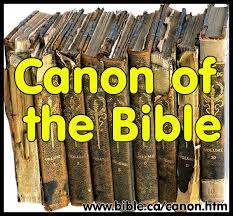By: Michael Nyavi (Sir Michael)
Introduction
The Hebrew Bible, also known as the Tanakh, is the foundational scripture of Judaism and an essential part of Christian Old Testament traditions. The process by which these sacred writings were collected, recognized, and accepted as authoritative is known as canonization. The term “canon” comes from the Greek word kanon, meaning “rule” or “measuring rod,” and it refers to the standard by which books were deemed sacred. The canonization of the Hebrew Bible was not a single event, but a gradual process that unfolded over centuries, involving historical, theological, and communal decisions.
The Structure of the Hebrew Bible
The Hebrew Bible is divided into three major sections:
- Torah (Law or Pentateuch) – The first five books, traditionally attributed to Moses.
- Nevi’im (Prophets) – Historical and prophetic books, including Joshua, Judges, Samuel, Kings, Isaiah, Jeremiah, and others.
- Ketuvim (Writings) – A diverse collection including Psalms, Proverbs, Job, Daniel, Ezra-Nehemiah, Chronicles, and others.
This tripartite division was already recognized by the time of Jesus (Luke 24:44), showing that the structure had become established by the first century CE.
Stages of Canonization
1. The Torah
The Torah was the earliest section to be canonized. According to Jewish tradition, Ezra the scribe (5th century BCE) played a central role in reading and re-establishing the Law after the Babylonian exile (Nehemiah 8). Most scholars agree that by the 5th century BCE, the Torah had achieved authoritative status among the Jewish people.
2. The Prophets
The Nevi’im were recognized as authoritative between the 4th and 3rd centuries BCE. Historical books such as Joshua and Kings were linked to Israel’s national identity, while the writings of major and minor prophets conveyed God’s messages. The prophetic books became essential to Jewish faith and worship, and references to them as “the prophets” appear in Jewish literature of the Second Temple period.
3. The Writings (Ketuvim)
The Ketuvim was the last section to be canonized, and its process was more complex. Books like Psalms and Proverbs gained early recognition due to their use in worship and wisdom traditions. Others, such as Esther, Ecclesiastes, and Song of Songs, faced debate because of their perceived secular or controversial nature. The Book of Daniel, written in the 2nd century BCE, was among the last accepted. By the end of the 1st century CE, however, the Ketuvim had also been recognized as scripture.
The Council of Jamnia (Yavneh) Debate
A significant moment in discussions of canonization is the Council of Jamnia (around 90 CE). While scholars now argue that this was not a formal “council” but rather a gathering of rabbis, it is believed that debates over books like Esther, Song of Songs, and Ecclesiastes were resolved there. By this time, the Hebrew Bible had essentially taken the shape we know today.
Criteria for Canonization
Several factors influenced whether a book was accepted into the canon:
- Prophetic Authority: Was it written by a prophet or someone closely connected to divine revelation?
- Consistency: Did the book align with Torah and core Jewish beliefs?
- Widespread Use: Was it accepted and used in worship across Jewish communities?
- Inspiration: Did the book show evidence of divine inspiration?
The Canon vs. the Septuagint
An important issue in canonization is the difference between the Hebrew Bible and the Greek Septuagint (LXX). The Septuagint, translated in Alexandria around the 3rd–2nd centuries BCE, contained additional books not included in the Hebrew canon, such as Tobit, Judith, and Maccabees. These are known today as the Apocrypha or Deuterocanonical books. While accepted in Catholic and Orthodox traditions, they were excluded from the Jewish canon.
Finalization of the Hebrew Canon
By the 2nd century CE, the Hebrew Bible had reached its final form with 24 books (which correspond to the 39 books of the Protestant Old Testament but arranged differently). Jewish tradition firmly held to these texts as divinely inspired and authoritative. The tripartite division—Torah, Prophets, and Writings became standard in Jewish religious life and continues to define Judaism today.
Conclusion
The canonization of the Hebrew Bible was a gradual but deeply significant process. It reflects the faith of a community that sought to preserve God’s revelation in history, law, prophecy, and wisdom. The canon was not decided by a single council or decree but by centuries of faithful usage, debate, and recognition of divine authority. The Hebrew Bible remains not only the foundation of Judaism but also a cornerstone for Christianity and a profound influence on global culture.
References
- Beckwith, R. T. The Old Testament Canon of the New Testament Church. Eerdmans, 1985.
- Sundberg, A. C. The Old Testament of the Early Church. Harvard Theological Review, 1954.
- Barton, John. Oracles of God: Perceptions of Ancient Prophecy in Israel after the Exile. Oxford University Press, 2007.
- Bruce, F. F. The Canon of Scripture. InterVarsity Press, 1988.
- Sanders, James A. From Sacred Story to Sacred Text: Canon as Paradigm. Fortress Press, 1987.
By Michael Nyavi (Sir Michael)




Изучение трафика интернет-ресурсов в Москве стал актуальной темой для многих компаний. С увеличением числа посетителей интернет-ресурсов так же растет и интерес к анализу их поведения. Анализ помогает выявить предпочтения клиентов .
[url=https://ya.in]Посещения сайтов москве[/url] позволяет получить ценные данные о поведении пользователей и их предпочтениях в интернете.
Посещение веб-ресурсов в Москве имеет свои характеристики . Например, в Москве фиксируется повышенный мобильный трафик. Это обусловлено широким использованием мобильных устройств .
https://shorturl.fm/PNDes